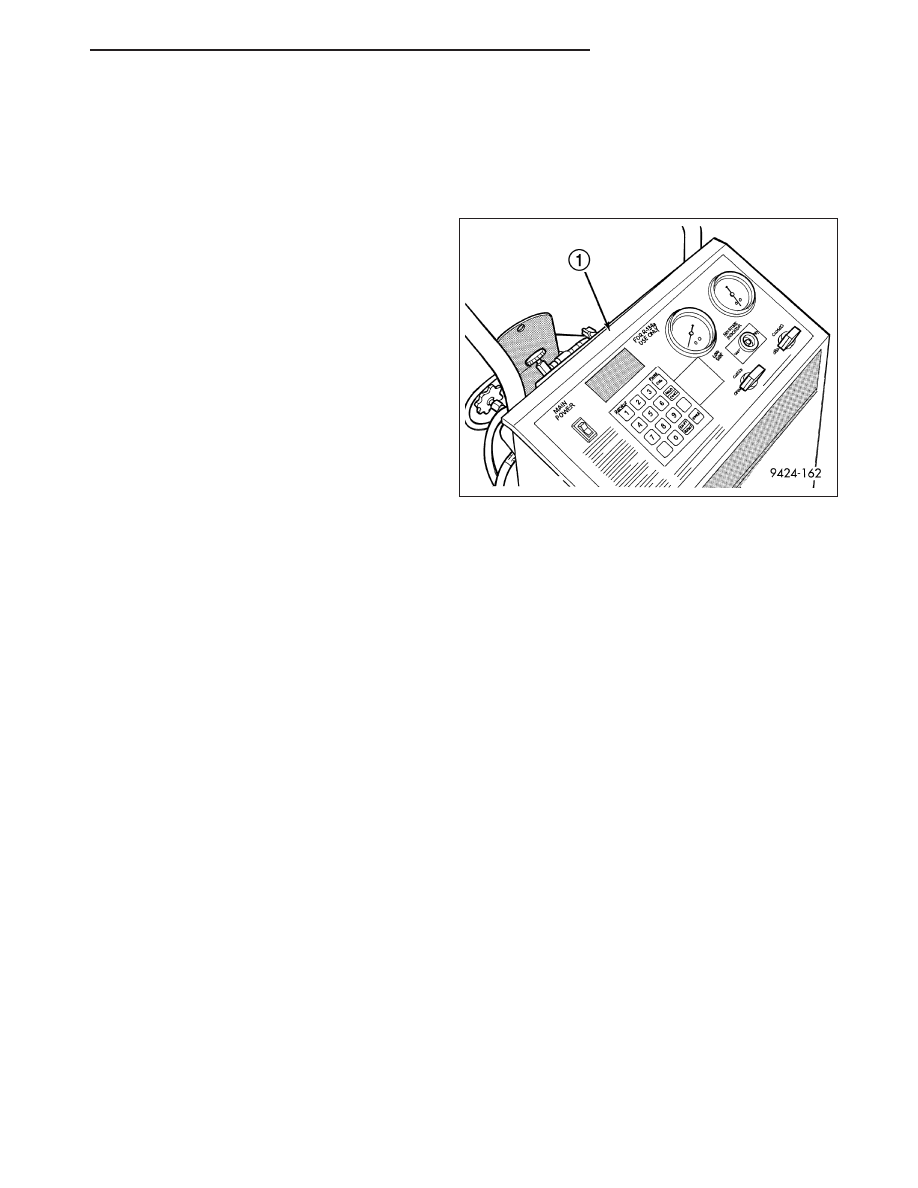Content .. 1557 1558 1559 1560 ..
Dodge Durango (HB). Manual - part 1559

REFRIGERANT SYSTEM RECOVERY
WARNING: Refer to the applicable warnings and cautions for this system before performing the following
operation (Refer to 24 - HEATING & AIR CONDITIONING/PLUMBING - FRONT - WARNINGS) and (Refer to 24
- HEATING & AIR CONDITIONING/PLUMBING - FRONT - CAUTIONS). Failure to follow the warnings and cau-
tions could result in possible personal injury or death.
NOTE: If equipped with the rear heating-A/C sys-
tem, use a heat gun to heat the underbody lines to
help remove any trapped refrigerant from the rear
A/C system.
An R-134a refrigerant recovery/recycling/charging sta-
tion (1) that meets SAE standard J2210 must be used
to recover the refrigerant from the R-134a refrigerant
system. Refer to the operating instructions supplied by
the equipment manufacturer for the proper care and
use of this equipment.
REFRIGERANT SYSTEM EVACUATE
NOTE: Special effort must be used to prevent moisture from entering the A/C system oil. Moisture in the oil
is very difficult to remove and will cause a reliability problem with the compressor.
If a compressor designed to use R-134a refrigerant is left open to the atmosphere for an extended period of time.
It is recommended that the refrigerant oil be drained and replaced with new oil or a new A/C compressor be used.
This will eliminate the possibility of contaminating the refrigerant system.
If the refrigerant system has been open to the atmosphere, it must be evacuated before the system can be filled.
Moisture and air mixed with the refrigerant will raise the compressor head pressure above acceptable operating
levels. This will reduce the performance of the A/C system and damage the A/C compressor. Moisture will boil at
near room temperature when exposed to vacuum. To evacuate the refrigerant system:
NOTE: When connecting the service equipment coupling to the line fitting, verify that the valve of the cou-
pling is fully closed. This will reduce the amount of effort required to make the connection.
1. Recover the refrigerant system (Refer to 24 - HEATING & AIR CONDITIONING/PLUMBING - FRONT - STAN-
DARD PROCEDURE - REFRIGERANT SYSTEM RECOVERY).
2. Connect a suitable charging station, refrigerant recovery machine or a manifold gauge set with vacuum pump
and refrigerant recovery equipment (Refer to 24 - HEATING & AIR CONDITIONING/PLUMBING - FRONT -
STANDARD PROCEDURE - REFRIGERANT SYSTEM SERVICE EQUIPMENT).
3. Open the suction and discharge valves and start the vacuum pump. The vacuum pump should run a minimum of
45 minutes prior to charge to eliminate all moisture in system. When the suction gauge reads -88 kPa (- 26 in.
Hg) vacuum or greater for 30 minutes, close all valves and turn off vacuum pump. If the system fails to reach
specified vacuum, the refrigerant system likely has a leak that must be corrected. If the refrigerant system main-
tains specified vacuum for at least 30 minutes, start the vacuum pump, open the suction and discharge valves.
Then allow the system to evacuate an additional 10 minutes.
4. Close all valves. Turn off and disconnect the vacuum pump.
5. Charge the refrigerant system (Refer to 24 - HEATING & AIR CONDITIONING/PLUMBING - FRONT - STAN-
DARD PROCEDURE - REFRIGERANT SYSTEM CHARGE).
HB
PLUMBING - FRONT
24 - 429